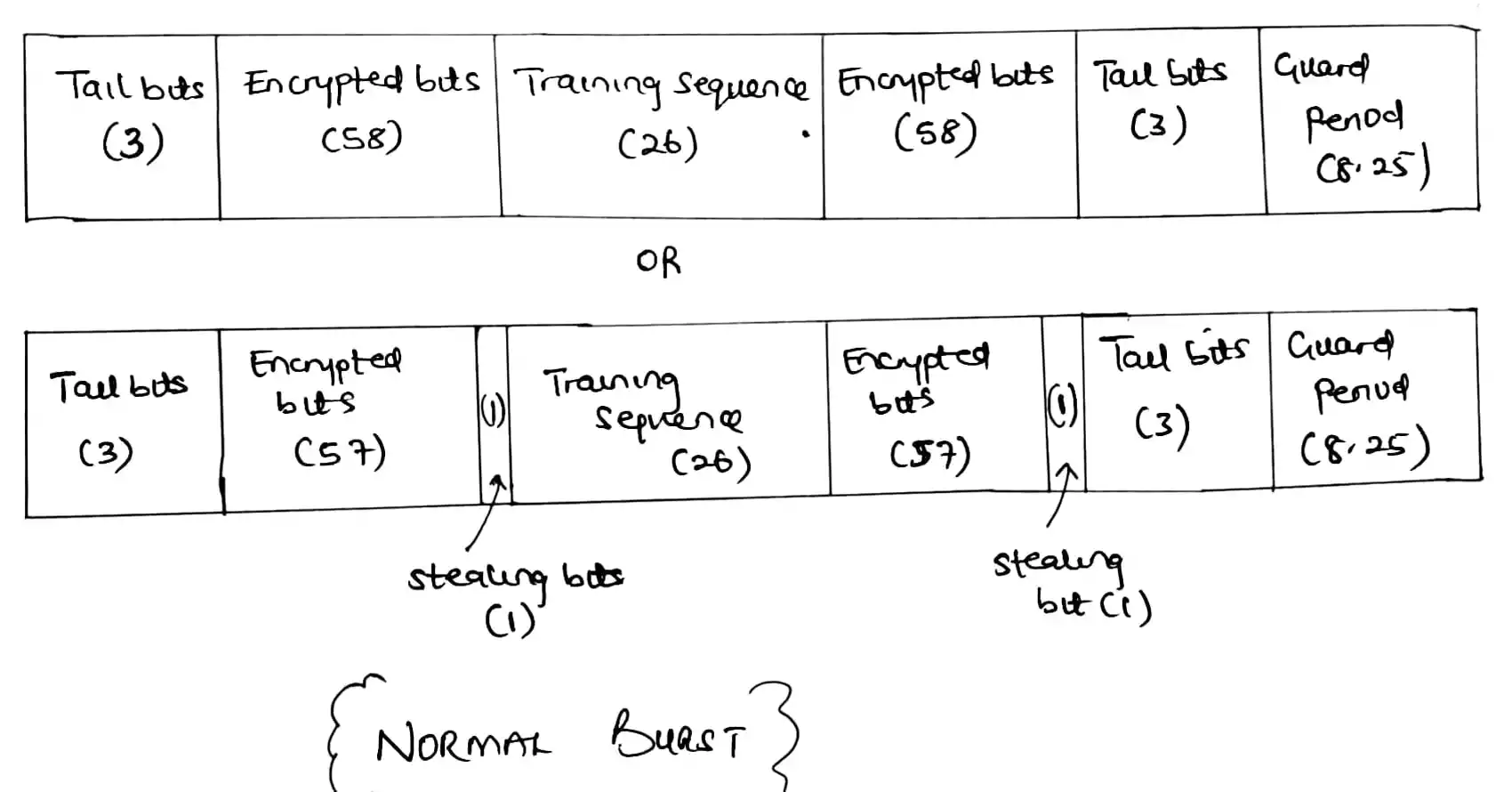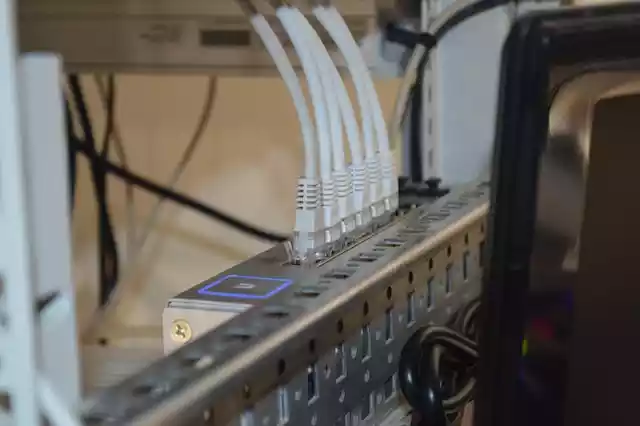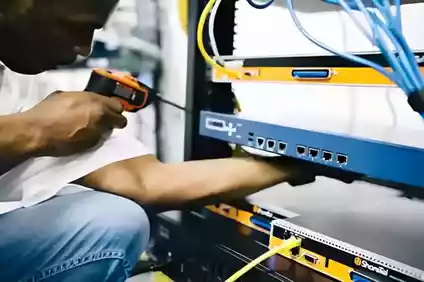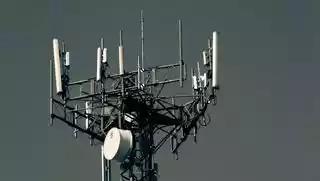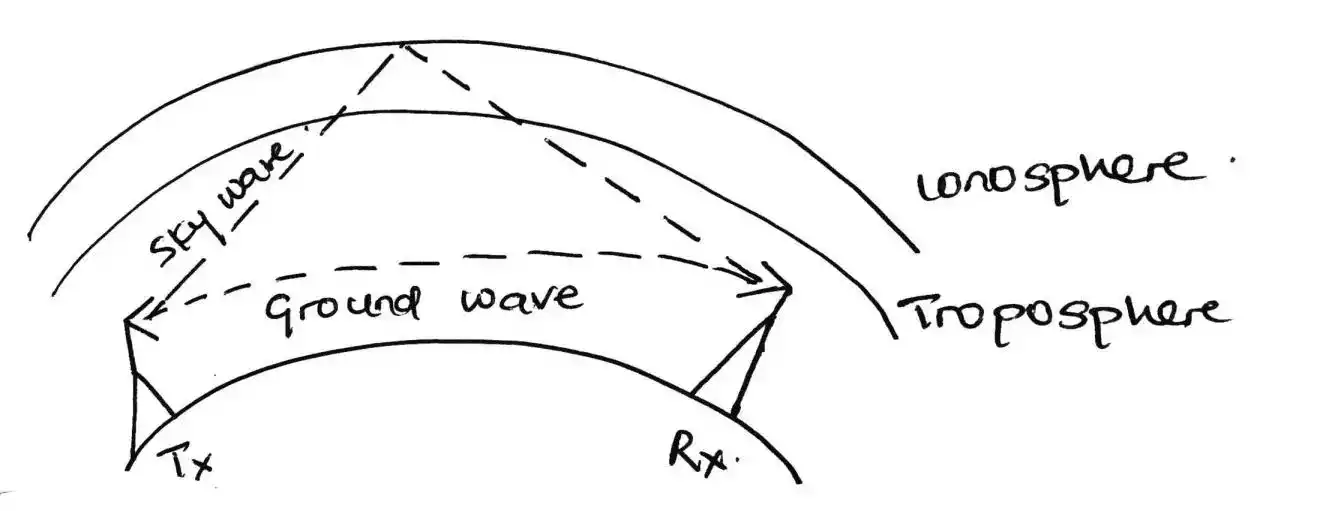Types of Optical Fiber Connectors Explained
Optical fiber connectors are devices used to join or terminate optical fibers, allowing for the efficient transmission of light signals between fiber optic cables.
They provide a secure and reliable connection, ensuring optimal performance and low signal loss in fiber optic communication systems.
With various connector types available, it’s important to understand their differences and applications.
In this article, we will explore the most common types of fiber optic connectors, their features, uses, and their advantages and disadvantages.
Types of Optical Fiber Connectors
There are six common optical fibers connectors which are used to join or terminate optical fibers.
- LC Connector (Lucent Connector)
- SC Connector (Subscriber Connector)
- ST Connector (Straight Tip Connector)
- FC Connector (Ferrule Connector)
- MTP/MPO Connector (Multifiber Push-On/Pull-Off Connector)
- MT-RJ Connector (Mechanical Transfer-Registered Jack)
1. LC Connector (Lucent Connector)
LC connectors are highly popular due to their small size, lightweight design, and ease of use.
They are commonly used in high-density applications where space is limited, such as data centers and telecommunications.
LC connectors are available in both single-mode and multimode versions, making them suitable for various fiber types and transmission distances.
They feature a push-pull latching mechanism, ensuring secure and reliable connections.
LC connectors provide excellent optical performance with low insertion loss and high return loss.
2. SC Connector (Subscriber Connector)
SC connectors are another widely used type of optical fiber connector. They share similarities with LC connectors in terms of size and weight, but have a different locking mechanism.
SC connectors are available in both single-mode and multimode versions, accommodating different fiber types and applications.
They are commonly used in telecommunications, data communication, and LAN applications.
SC connectors offer reliable performance with low insertion loss and high return loss.
3. ST Connector (Straight Tip Connector)
ST connectors are the oldest type of optical fiber connector. They are larger and more robust compared to LC and SC connectors, making them suitable for harsher environments.
ST connectors are available in both single-mode and multimode versions.
They use a bayonet-style coupling mechanism, requiring a twist-on and twist-off action to establish or disconnect a connection.
ST connectors are commonly used in applications such as LANs, campus networks, and CATV systems.
They provide reliable performance, but may have higher insertion loss compared to newer connector types.
4. FC Connector (Ferrule Connector)
FC connectors utilize a threaded coupling mechanism and employ a ferrule to hold the fiber optic cable.
They are commonly used in single-mode fiber systems where precision alignment is important.
FC connectors provide a secure and stable connection, making them suitable for applications requiring high reliability.
They are commonly found in telecommunications, test and measurement, and military applications.
FC connectors are available in both single-mode and multimode versions.
5. MT-RJ Connector (Mechanical Transfer-Registered Jack)
MT-RJ connectors are duplex connectors that integrate both fibers into a single plug.
They use a push-pull mechanism, allowing for quick and easy connections.
MT-RJ connectors are typically used in multimode fiber systems, particularly in data communications and LAN environments.
They offer space-saving benefits and simplified polarity management with keying features.
MT-RJ connectors are not as widely adopted as other connector types, but they provide reliable performance in suitable applications.
6. MTP/MPO Connector (Multifiber Push-On/Pull-Off Connector)
MPO connectors are designed to accommodate multiple fibers within a single connector.
They enable high-density connectivity, making them ideal for applications requiring parallel optical links.
MPO connectors are commonly used in data centers, high-speed networks, and telecommunications.
They can support various fiber types and offer quick and efficient connectivity.
MPO connectors are available in both single-mode and multimode versions.
Advantages and Disadvantages of Each Type of Optical Fiber Connectors
Here are the advantages and disadvantages of different types of fiber connectors:
-
LC Connector (Lucent Connector):
-
Advantages:
- Small form-factor allows for high-density connections.
- Provides excellent optical performance with low insertion loss.
- Compatible with SFP (Small Form-factor Pluggable) transceivers.
-
Disadvantages:
- More susceptible to damage due to its smaller size.
-
-
SC Connector (Subscriber Connector):
-
Advantages:
- Easy and quick installation with a push-pull mechanism.
- Suitable for high-density applications.
- Provides good optical performance with low insertion loss.
-
Disadvantages:
- Requires more space compared to smaller connectors.
- May not be compatible with certain small form-factor devices.
-
-
ST Connector (Straight Tip Connector):
-
Advantages:
- Rugged design, suitable for harsh environments.
- Easy to install with a push-pull mechanism.
- Commonly used in multimode fiber systems.
-
Disadvantages:
- Larger form-factor, limiting high-density applications.
- Higher insertion loss compared to newer connectors.
-
-
FC Connector (Ferrule Connector):
-
Advantages:
- Robust and durable construction.
- Threaded coupling provides a secure connection.
- Ideal for single-mode fiber systems.
-
Disadvantages:
- Time-consuming installation due to the threaded mechanism.
- Not suitable for high-density applications.
-
-
MT-RJ Connector (Mechanical Transfer-Registered Jack):
-
Advantages:
- Duplex connector with both fibers in a single plug.
- Space-saving design for high-density applications.
- Easy polarity management with keying features.
-
Disadvantages:
- Limited to multimode fiber applications.
- Requires additional care due to its smaller size.
-
-
MTP/MPO Connector (Multifiber Push-On/Pull-Off Connector):
-
Advantages:
- High-density connector with multiple fibers in a single connector.
- Allows for quick and efficient connectivity in data centers.
- Supports parallel optical links for high-speed data transmission.
-
Disadvantages:
- Requires precision alignment during installation.
- More expensive compared to single-fiber connectors.
-
What Are Fiber Optic Connectors Used For?
Fiber optic connectors are used for various purposes in fiber optic communication systems. Here are some common applications:
- Fiber optic connectors are used to establish network connections in telecommunications, data centers, and local area networks (LANs). They enable the seamless transmission of high-speed data over long distances.
- Fiber optic connectors are used to create patch cords or jumper cables that connect devices, such as servers, switches, routers, and optical transceivers. Patch cords facilitate easy and flexible connections between network components.
- Connectors play a crucial role in fiber optic splicing, which is the process of joining two fiber optic cables together. Splicing is often performed using fusion splicing or mechanical splicing techniques, and connectors are used to terminate and protect the spliced fibers.
- Fiber optic connectors are used in distribution frames, also known as fiber optic patch panels. These panels provide a centralized location for managing and organizing fiber optic cables, allowing for easy connectivity and troubleshooting.
- Fiber optic connectors are utilized in test equipment and instruments for measuring the performance and quality of fiber optic networks. Test equipment connectors enable accurate and reliable testing and measurement of optical signals.
- Connectors are used for terminating individual fibers or cables in fiber optic installations. Termination involves attaching connectors to fiber ends, allowing for quick and easy connection to other fiber optic components.
- Fiber optic connectors find applications in various industrial settings, including oil and gas, transportation, manufacturing, and aerospace. They provide reliable and high-speed communication in challenging environments.

